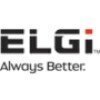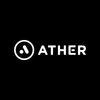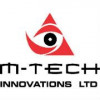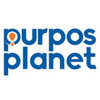new Product Development Engineer
50+ new Product Development Engineer Interview Questions and Answers
Asked in EQuad Engineering Services

Q. List the surface finish symbols and their significance.
Surface finish symbols are used to indicate the type of surface finish required for a part.
Surface finish symbols are typically represented by a series of lines, circles, and triangles.
The symbols are used to indicate the type of surface finish required for a part, such as roughness, waviness, or lay.
Examples of surface finish symbols include Ra for roughness average, Rz for roughness depth, and W for waviness.
Asked in EQuad Engineering Services

Q. How do you identify 1st and 3rd angle projection symbols?
1st and 3rd angle projection symbols are used in engineering drawings to indicate the orientation of the object being depicted.
1st angle projection symbol is a triangle with the number '1' inside and is used in Europe and Asia.
3rd angle projection symbol is a triangle with the number '3' inside and is used in North America.
The symbol is usually placed in the lower right-hand corner of the drawing.
The symbol indicates the direction of the view and the position of the object in...read more
new Product Development Engineer Interview Questions and Answers for Freshers
Asked in EQuad Engineering Services

Q. Draw orthographic projections of the given isometric view.
Draw orthographic projections of given isometric view.
Identify the isometric view and its orientation
Draw the front, top, and right views using the correct scale and proportions
Ensure that all lines are parallel and dimensions are accurate
Label each view with the appropriate dimensions and notes
Check for any errors or inconsistencies
Asked in EQuad Engineering Services

Q. relationship between Potential and Kinetic energy in bernoulli's theorem
Bernoulli's theorem states that potential energy decreases as kinetic energy increases in a fluid flow.
Bernoulli's theorem is based on the conservation of energy in a fluid flow.
Potential energy is the energy possessed by a fluid due to its position or elevation.
Kinetic energy is the energy possessed by a fluid due to its motion.
As the velocity of a fluid increases, its kinetic energy increases and its potential energy decreases.
This relationship is described by Bernoulli's e...read more


Q. What is shrink and shrinkage, what is 2plate and 3plate mold
Shrink is the reduction in size of a plastic part during cooling, while shrinkage refers to the percentage of size reduction. 2plate and 3plate molds are types of injection molds used in plastic part manufacturing.
Shrink is caused by the cooling and solidification of the plastic material.
Shrinkage is expressed as a percentage and is calculated by comparing the dimensions of the molded part to the dimensions of the mold.
2plate molds consist of two plates that separate to eject...read more
Asked in EQuad Engineering Services

Q. What is the difference between relative humidity, absolute humidity, and saturation humidity?
Relative humidity is the ratio of actual water vapor present in the air to the maximum amount of water vapor air can hold at a given temperature.
Absolute humidity is the actual amount of water vapor present in the air.
Saturation humidity is the maximum amount of water vapor air can hold at a given temperature.
Relative humidity and absolute humidity are measured in percentage while saturation humidity is measured in grams per cubic meter.
Relative humidity is affected by temper...read more
new Product Development Engineer Jobs




Asked in Foxconn

Q. How will you handle Engineering changes?
I will follow a structured process to evaluate the impact of the change and ensure proper documentation and communication.
Review the change request and assess its impact on the product design, cost, and schedule
Evaluate the feasibility of the change and propose alternatives if necessary
Document the change request and update relevant documents such as drawings, specifications, and BOMs
Communicate the change to stakeholders such as manufacturing, quality, and suppliers
Obtain ap...read more

Asked in Ather Energy

Q. What is APQP, whole development cycle , How to deal with issues and resolve.
APQP is a structured approach to product development that involves planning, design, validation, and launch phases.
APQP stands for Advanced Product Quality Planning
It is a framework used to ensure that products meet customer requirements and are launched successfully
The development cycle includes planning, design, validation, and launch phases
Issues can be dealt with by identifying the root cause, developing a corrective action plan, and implementing the plan
Effective communi...read more
Share interview questions and help millions of jobseekers 🌟


Asked in A.P.Electronics

Q. What is the difference between a constant current (CC) and constant voltage (CV) LED driver?
CC LED driver maintains constant current output while CV LED driver maintains constant voltage output.
CC LED driver is used for high power LEDs and ensures uniform brightness.
CV LED driver is used for low power LEDs and ensures longer lifespan.
CC LED driver is more expensive than CV LED driver.
CC LED driver is more efficient than CV LED driver.
CC LED driver is used in applications where LED brightness needs to be maintained constant.
CV LED driver is used in applications where...read more

Asked in M Tech Innovations

Q. Is in development activities what about Ppap mining
PPAP (Production Part Approval Process) is a standardized process in the automotive industry to ensure suppliers meet quality standards.
PPAP is a set of guidelines developed by the Automotive Industry Action Group (AIAG) to establish confidence in suppliers and their production processes.
It involves submitting documentation such as design records, process flow diagrams, control plans, and measurement system analysis.
PPAP is typically required by automotive OEMs before a new p...read more
Asked in Hyundai Engineering Plastics India

Q. What did you learn in college through your degree? Plastic wastes are generated on a large scale.WHat is your solution to this? How many languages can you speak proficoently?
I learned about materials science and engineering principles, including sustainable design and waste reduction.
I learned about the properties and characteristics of different materials, including plastics, and how they can be designed for sustainability and recyclability.
I also studied waste reduction strategies, such as designing products for disassembly and reuse, and using biodegradable materials.
One solution to plastic waste is to promote the use of biodegradable plastics...read more
Asked in Hyundai Engineering Plastics India

Q. Introduce yourself. What is plastics?
Plastics are synthetic materials made from polymers that can be molded into various shapes and forms.
Plastics are widely used in manufacturing due to their versatility and durability.
They are commonly used in packaging, construction, automotive, and electronics industries.
Examples of plastics include polyethylene, polypropylene, PVC, and PET.
Plastics can be recycled, but not all types are recyclable.
Plastics can have negative environmental impacts if not disposed of properly.

Asked in A.P.Electronics

Q. Are you familiar with the documentation process for LED lighting?
Documentation process in LED lighting involves creating technical specifications, test reports, and user manuals.
Technical specifications outline the product's features, performance, and compliance with industry standards.
Test reports document the results of various tests conducted on the product to ensure its quality and safety.
User manuals provide instructions on how to install, operate, and maintain the product.
Other documentation may include design drawings, bill of mater...read more

Asked in Foxconn

Q. How much experience do you have in mobile manufacturing?
I have 3 years of experience in mobile manufacturing.
Worked for 3 years in a mobile manufacturing company
Experience in designing and developing new mobile products
Knowledge of manufacturing processes and quality control in mobile industry

Asked in Suzuki Motorcycle

Q. What is the difference between hot forging and cold forging?
Hot forging involves shaping metal at high temperatures, while cold forging is done at or near room temperature.
Hot forging allows for greater deformation and is suitable for complex shapes.
Cold forging improves surface finish and dimensional accuracy.
Hot forging is typically used for larger components, like automotive parts.
Cold forging is often used for smaller, high-volume parts, such as fasteners.
Asked in EQuad Engineering Services

Q. calculation of gear ratio,
Gear ratio is the ratio of the number of teeth on the driven gear to the number of teeth on the driving gear.
Count the number of teeth on the driving gear (gear attached to the motor) and the driven gear (gear attached to the load)
Divide the number of teeth on the driven gear by the number of teeth on the driving gear to get the gear ratio
For example, if the driving gear has 20 teeth and the driven gear has 40 teeth, the gear ratio is 2:1

Asked in M Tech Innovations

Q. Is in development activities what about PFD
PFD stands for Process Flow Diagram, which is a visual representation of the steps involved in a process.
PFDs are used to understand the flow of a process and identify potential areas for improvement.
They typically include equipment, materials, and information flow.
PFDs are essential in new product development to ensure efficient and effective processes.
Examples of PFDs include diagrams showing the steps involved in manufacturing a new product or the flow of information in a ...read more

Asked in M Tech Innovations

Q. Is in development activities What about PFMEA
PFMEA stands for Process Failure Mode and Effects Analysis, a method used to identify and prioritize potential failure modes in a process.
PFMEA is a systematic approach to identifying and preventing potential failures in a manufacturing or development process.
It involves analyzing each step of the process to determine potential failure modes, their effects, and the likelihood of occurrence.
Risk priority numbers (RPN) are calculated to prioritize which failure modes should be ...read more

Asked in Foxconn

Q. Explain Advanced Product Quality Planning (APQP).
APQP is a structured approach to product development that ensures customer satisfaction through effective planning and risk management.
APQP involves cross-functional teams working together to identify and mitigate potential risks throughout the product development process.
It includes five phases: planning, product design and development, process design and development, product and process validation, and launch, assessment, and feedback.
APQP is commonly used in the automotive...read more

Asked in RSB Transmissions

Q. What does NPD stand for and what does it mean?
NPD stands for New Product Development, which refers to the process of bringing a new product from concept to market.
NPD involves idea generation, product design, prototyping, testing, and commercialization.
It aims to meet customer needs, stay ahead of competitors, and drive business growth.
Examples include Apple launching a new iPhone model or Nike introducing a new line of athletic shoes.

Asked in MahiTech

Q. Are you able to do 3D modeling and drafting?
Yes, I am proficient in 3D modelling and drafting using software like SolidWorks and AutoCAD.
Proficient in 3D modelling software like SolidWorks and AutoCAD
Experienced in creating detailed drafts and models for new product development
Ability to interpret technical drawings and specifications accurately

Asked in A.P.Electronics

Q. Why do surges occur in outdoor LED lighting?
Surges occur at outdoor LED lighting due to various reasons.
Lightning strikes
Power fluctuations
Switching of high-power equipment
Faulty wiring
Poor grounding
Inadequate surge protection
Environmental factors such as humidity and temperature changes
Overloading of circuits
Electromagnetic interference
Voltage spikes from the power grid
Inrush current during startup
Design flaws in the LED driver circuitry


Q. What is the shrinkage value of the material?
Shrinkage value of a material refers to the amount by which the material contracts or shrinks during the cooling process after being molded or formed.
Shrinkage value is typically expressed as a percentage of the original size of the material.
It is an important factor to consider in manufacturing processes, especially in injection molding and casting.
Different materials have different shrinkage values, so it is crucial to account for this when designing molds or parts.
For exam...read more
Asked in EQuad Engineering Services

Q. types of tolerances and fits
Tolerances and fits are important in product development. Tolerances refer to the allowable variation in dimensions, while fits describe the degree of interference between mating parts.
Tolerances can be classified as either unilateral or bilateral
Fits can be classified as clearance, interference, or transition
Examples of fits include press fit, slip fit, and force fit
Asked in EQuad Engineering Services

Q. What is the mechanical advantage of a pulley?
Pulley provides mechanical advantage by reducing the amount of force required to lift a load.
A pulley system can have multiple pulleys to increase mechanical advantage
The mechanical advantage of a pulley is equal to the number of supporting ropes or cables
Pulleys can change the direction of the force applied to lift a load
Examples of pulleys include cranes, elevators, and flagpoles

Asked in A.P.Electronics

Q. How do you resolve an LED flickering problem?
LED flickering can be resolved by checking power supply, using proper dimmer, and selecting high-quality LED bulbs.
Check power supply for voltage fluctuations
Use a proper dimmer that is compatible with LED bulbs
Select high-quality LED bulbs that are designed to work with dimmers
Ensure proper grounding of the circuit
Avoid using too many LED bulbs on a single circuit
Consider using an LED driver to regulate the voltage
Check for loose connections or damaged wiring

Asked in M Tech Innovations

Q. In development activities, what is APQP?
APQP stands for Advanced Product Quality Planning, a structured method for developing and introducing new products.
APQP is a quality framework used in the automotive industry to ensure that products meet customer requirements.
It involves defining the project scope, creating a cross-functional team, and developing a detailed plan.
APQP includes activities such as design and process FMEAs, control plans, and production part approval.
The goal of APQP is to prevent defects and red...read more
Asked in Spectra Products

Q. What are the PPAP submission levels?
PPAP Submission level is a process of ensuring that the supplier's production process meets the customer's requirements.
PPAP stands for Production Part Approval Process
It is a standardized process used in the automotive industry
PPAP submission level is the level of documentation required for a supplier to demonstrate that their production process is capable of meeting the customer's requirements
There are five levels of PPAP submission, with level 1 being the least stringent a...read more

Asked in Purpos Planet

Q. What tools do you use most often?
CAD software, simulation tools, project management software
CAD software like SolidWorks for designing
Simulation tools like ANSYS for testing designs
Project management software like Jira for tracking progress

Asked in MahiTech

Q. Which software are you comfortable using?
I am comfortable with CAD software like SolidWorks and AutoCAD, as well as simulation software like ANSYS.
CAD software like SolidWorks and AutoCAD
Simulation software like ANSYS
Interview Questions of Similar Designations
Interview Experiences of Popular Companies








Reviews
Interviews
Salaries
Users

















